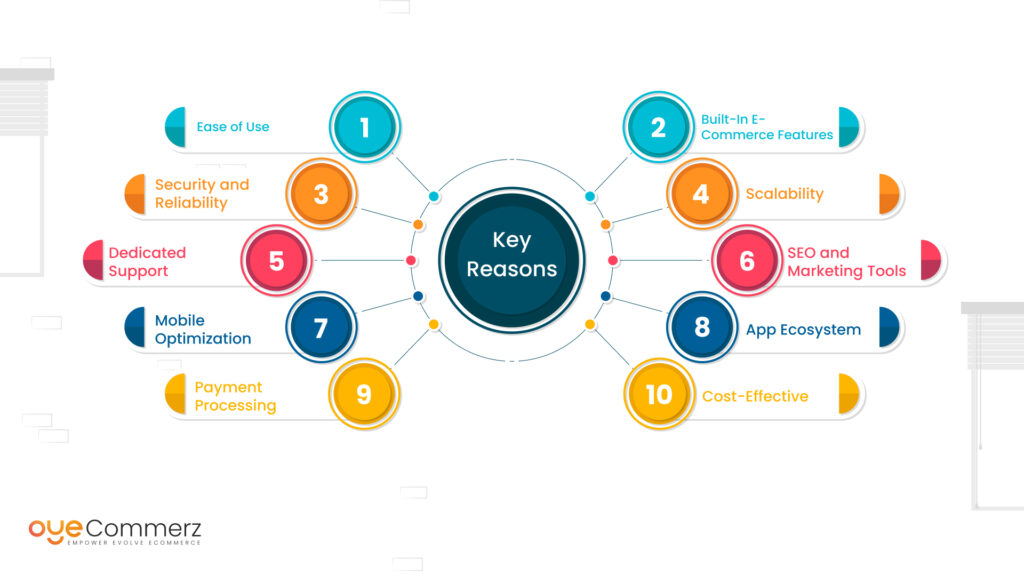Seamless WordPress to Shopify Migration: A Comprehensive Roadmap for E-commerce Growth
Shifting from WP to Shopify marks an promising step toward streamlining your online store processes. As businesses grow, selecting a solution that aligns with scalability, user experience, and customization becomes crucial. Shopify has emerged as a preferred choice for e-commerce professionals, providing superior adaptability, data protection, and ease of use. In this guide, we’ll explore the transformative impact of this migration, highlight the advantages, and share practical tips to facilitate a smooth transition.
1. Why Migrate from WordPress to Shopify?
The combination of WordPress and WooCommerce, continues to support countless e-commerce platforms. However, as businesses scale, issues like plugin dependency, security vulnerabilities, and complex setups often obstruct progress. Shopify, specifically created for digital retail, eliminates these issues with an comprehensive, user-friendly platform. Real data back this transition—Shopify powers over 4.4 million websites worldwide, with a documented 10% boost to sales conversion rates for numerous merchants after migration.
2. Key Benefits of Shopify for E-commerce Success
Shopify’s powerful platform caters for expanding businesses. Its standout features include:
- Seamless Customization: Shopify provides over 80 professionally designed themes.
- Built-in Features: Features like Shopify Payments and integrated SEO save time and effort.
- Global Reach: Currency versatility and regional customization empower brands to expand internationally.
Additionally, Shopify boasts an uptime rate of 99.98%, guaranteeing your website is always operational.
3. Getting Ready for Your WP-to-Shopify Transition
Before migrating, assess your existing setup. Review product data, client information, and search engine rankings. Tools like Shopify’s Migration Kit or external tools help ease the transition. Create a comprehensive plan, making sure all assets—product descriptions, media files, and articles—are ready for seamless import.
4. Data Migration: A Critical Step
Transferring your data is a cornerstone of a smooth transition. When migrating from WP to Shopify, prioritize:
- Product Information: SKU, descriptions, and groupings.
- Client Information: Emails, order history, and preferences.
- Search Engine Considerations: Preserve meta tags, URLs, and forwarding E-commerce re-platforming paths to avoid SEO losses.
Use apps like LitExtension to streamline data transfer while reducing mistakes.
5. Tailoring Your Shopify Store to Fit Your Brand
Post-migration, personalizing your Shopify store ensures it aligns with your brand. Take advantage of Shopify’s intuitive page builder to design pages effortlessly. Shopify's templates are mobile-responsive, ensuring a smooth user experience across platforms—a critical factor, since 74% of online shopping comes from mobile users.
6. How to Protect Your SEO Rankings When Switching Platforms
Search engine optimization is crucial for preserving Reliable Shopify migration your visibility during migration. Shopify is highly optimized for search engines with clean URL structures, preloaded features, and seamless blog integration. Ensure:
- Implement 301 redirects for old URLs.
- Optimize new pages with targeted phrases.
- Use Shopify's apps Plug in SEO to track analytics post-migration.
7. Essential Tests After Migrating to Shopify
Once the migration is complete, conduct thorough testing.
Check: - Page load times (Shopify delivers faster speeds in contrast with WordPress).
- Functionality of payment gateways and transaction flow.
- Mobile responsiveness.
Testing guarantees your store delivers a seamless shopping experience from day one.
8. Case Study of a Successful Migration
One such migration success story is Gymshark, a fitness apparel brand that moved to Shopify. After the switch, the company saw a 60% increase in mobile sales and significantly lowered site downtime. This highlights the potential of Shopify in enhancing e-commerce growth.
9. Overcoming Common Migration Issues
Migration is not without obstacles, such as data integrity and reconfiguring custom functionalities. However, Shopify’s extensive assistance and external professionals simplify the process. Collaborating with qualified Shopify developers helps guarantee a trouble-free transition.
10. Making the Switch: The First Step Toward Success
Migrating from WordPress to Shopify marks a forward-thinking decision to online retail. By focusing on growth, simplifying management, and enhancing the customer experience, Shopify empowers businesses to thrive in competitive markets.
Final Thoughts
Transitioning from WP to Shopify is a strategic move that can greatly enhance your online business performance. With a robust migration plan, the appropriate resources, and expert support, you can unlock new success milestones.
Ready to make the leap? Reach out today to learn how our Shopify migration services can revolutionize your online store. Contact us now, or ask yourself: Is it time to seize Shopify’s advantages for your store?
